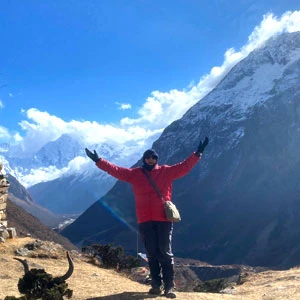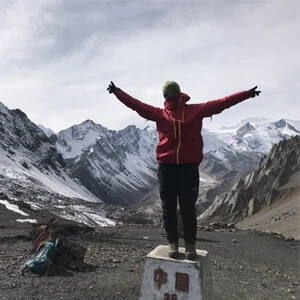Panchase Trek Overview
Panchase Trek is yet another one of Nepal’s hidden cultural and natural gems. The trek is located in the same region as the popular Annapurna Circuit Trek and Annapurna Base Camp Trek and is often overlooked by hikers. It is a small trek ideal for experiencing beautiful natural scenery and mountain peak views within a short amount of time. The Panchase Trek is a great trek for families and beginners and offers some of the best viewpoints to see the Annapurna range as well as other mountain peaks including Dhaulagiri (8167 m), Lamjung Himal (6983 m), and Machhapuchhre (6993 m). Apart from being a great introduction to trekking in the Himalayas and offering a great experience for those with a short amount of time available, it provides amazing diversity and beauty in the scenery as the trek goes through lush rice fields, lavish vegetation, and local Gurung communities and villages.
The Panchase Trek sets off with a boat trip across the beautiful Phewa Lake to our starting point. We will climb through a lush forest before reaching the stairs that lead up to the famous Buddhist World Peace Pagoda. 80 World Peace Pagodas have been built around the world in an attempt to promote world peace. The pagoda itself is a remarkable sight; however, it also offers breathtaking views of Phewa Lake and the city of Pokhara. We continue our trek down through a little forest before ascending again to reach Bumdi, our destination for the day. The trail leads us through a beautiful forest with great opportunities to see some of the wildlife of the area, such as a vast amount of rare birds and monkeys as well! We continue the trek, passing some great panoramic viewpoints before arriving at Bhanjyang. On our third day, we will reach the summit of Panchase Hill (2500 m), which is the highest point of our trek. Apart from the awe-inspiring view from Panchase Hill, it is also one of the best places to witness the sunrise as it bathes the mighty mountain peaks in golden sunlight in a truly remarkable sight! Continuing down through the village of Alldanda, we will follow the trail to Bhadaure. On our last day, we will follow a trail winding its way down through local villages and across streams before finally reaching our destination of Naudanada, from where we will get transport back to Pokhara.
Likewise, if your time frame permits, then we highly recommend visiting the most beautiful community lodge trek, the Mohare Danda Trek, and the classic Ghorepani Poon Hill Trek. For more details, please do not hesitate to contact the local experts.
Panchase Hill Trek Difficulty
The Panchase Hill Trek is considered one of the easier treks in Nepal, making it an ideal choice for beginners and families seeking a short yet rewarding Himalayan adventure. During this trek, you will face moderate ascents and descents, with daily trekking hours ranging from 4 to 6 hours, depending on your pace. Additionally, the trails are well-maintained and do not require technical skills as the journey only takes you to a maximum altitude of 2,500 meters (even reducing the risk of altitude sickness). Altogether, the journey winds through lush forests, terraced fields, and charming villages, providing plenty of opportunities to rest and take in the scenic beauty. Yet being an easy journey, you will need to have a reasonable level of fitness.
Best Time To Trek Panchase Hill
The best time for the Panchase Trek is during the Autumn (September to November) and Spring (March to May) seasons. During Autumn, the Monsoon rains have cleared, leaving behind lush greenery and unobstructed views of the Annapurna and Dhaulagiri mountain ranges. The crisp air and vibrant landscapes make this period ideal for photography and immersive trekking. As for Spring, it adds blooming rhododendron forests, which bring bursts of red, pink, and white hues to the trails. The pleasant daytime temperatures and longer daylight hours are perfect for trekking at a relaxed pace.
While the trek is doable year-round, Winter (December to February) can bring cold temperatures, particularly in the mornings and evenings, but it remains manageable at Panchase’s lower altitudes. Monsoon (June to August) is the least favorable time due to heavy rains, leech-infested trails, and limited mountain visibility.
Panchase Village Trekking Permits
The Panchase Trek is considered one of the more accessible treks in Nepal, and it does not require any restricted area permits like some of the other trekking routes. However, trekkers must still obtain two permits which are as follows. You can get both the permits in Kathmandu at the Nepal Tourism Board Office or in Pokhara at the ACAP office. It's a straightforward process, requiring a passport copy and a couple of passport-sized photos.
- Annapurna Conservation Area Project (ACAP) Permit: USD 30 per person
- Trekking Information Management System (TIMS) Card: USD 20 per person
How Can I Make A Reservation For This Trip?
To confirm your trek with us, please send us an email with a copy of your passport, a passport-size photo, and flight details (if available), as well as a 10% deposit of the total amount, using our online payment gateway. The remainder of the payment can be made upon our arrival. For more details, contact our local specialists right away.



 based on 16 reviews
based on 16 reviews



